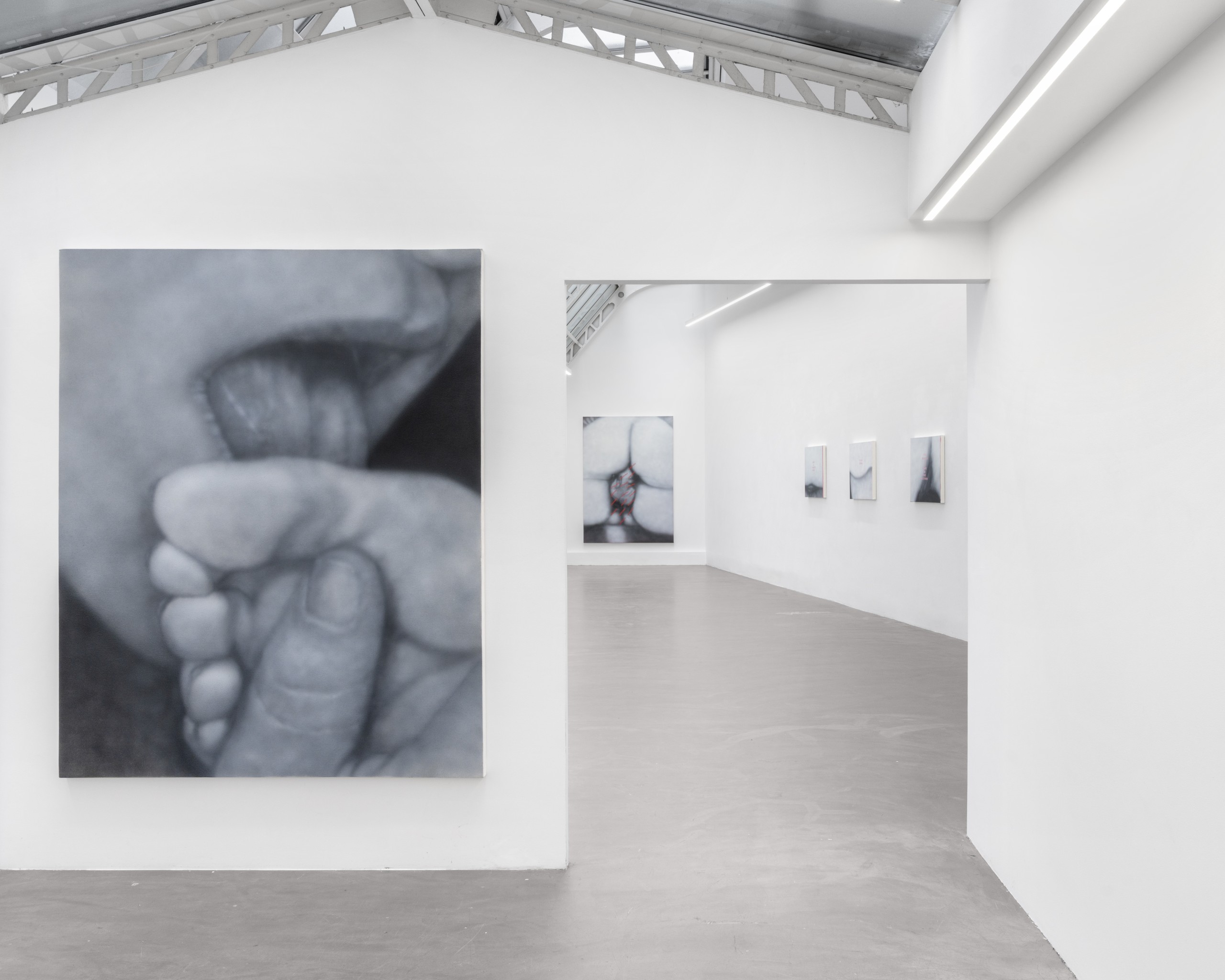
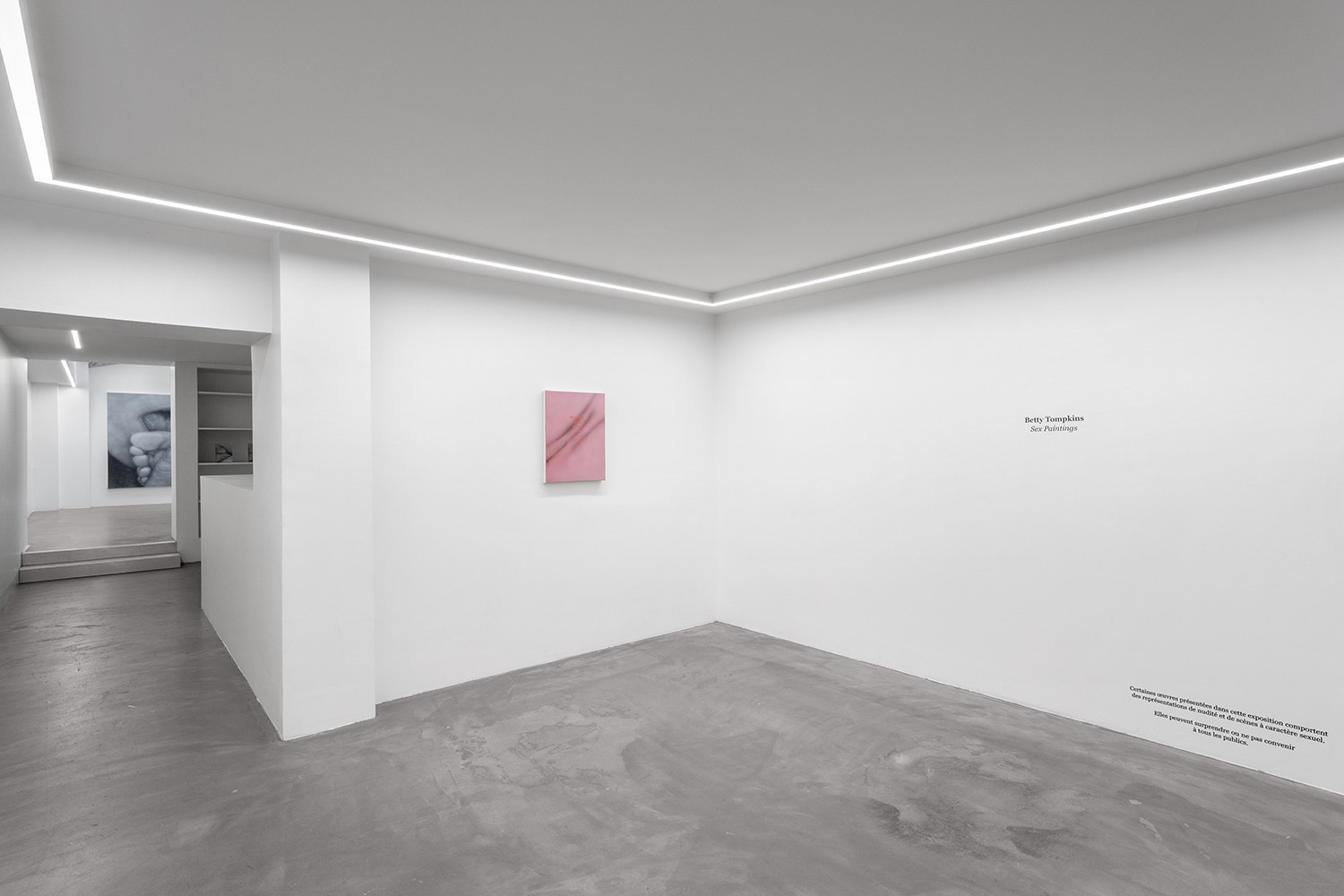
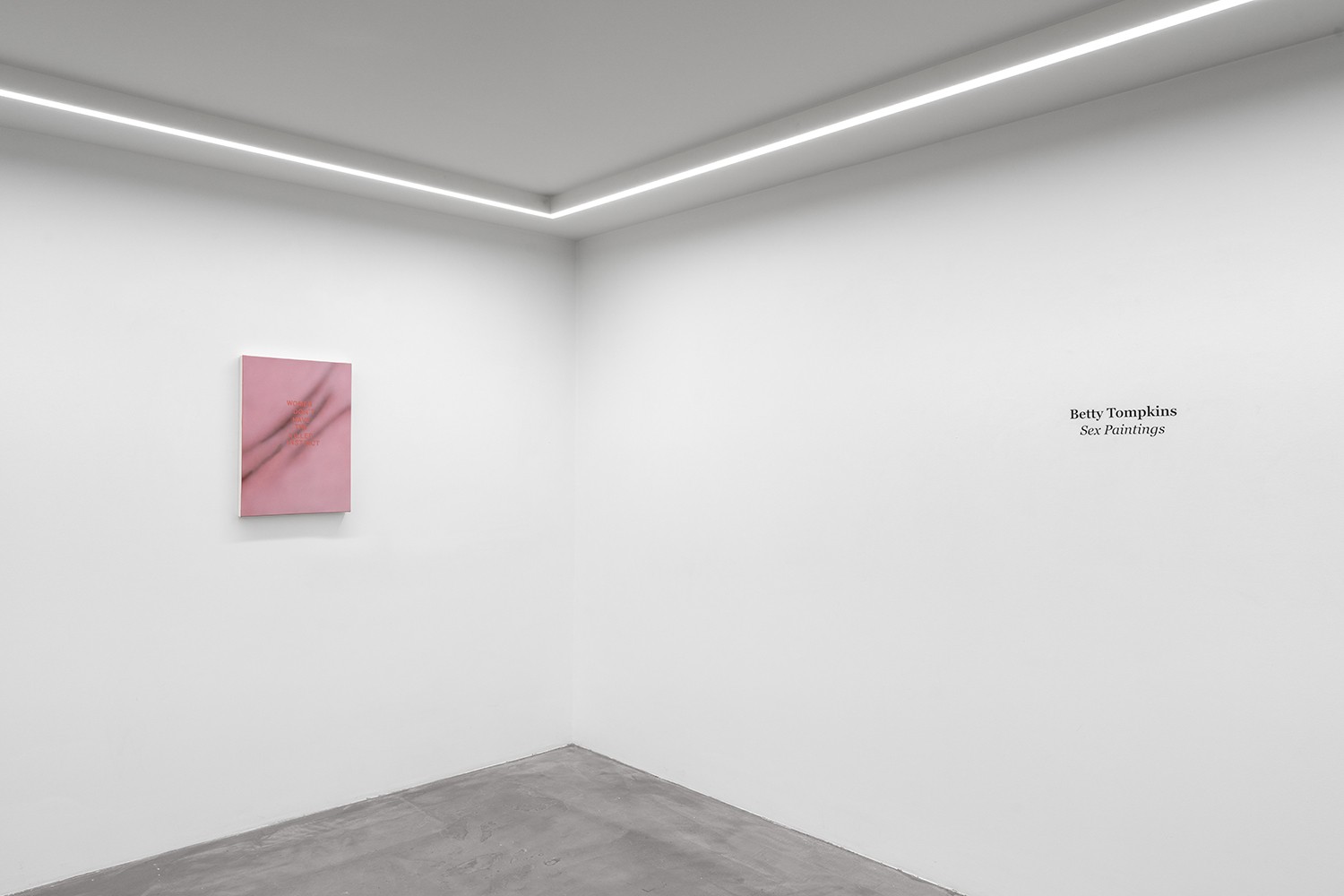
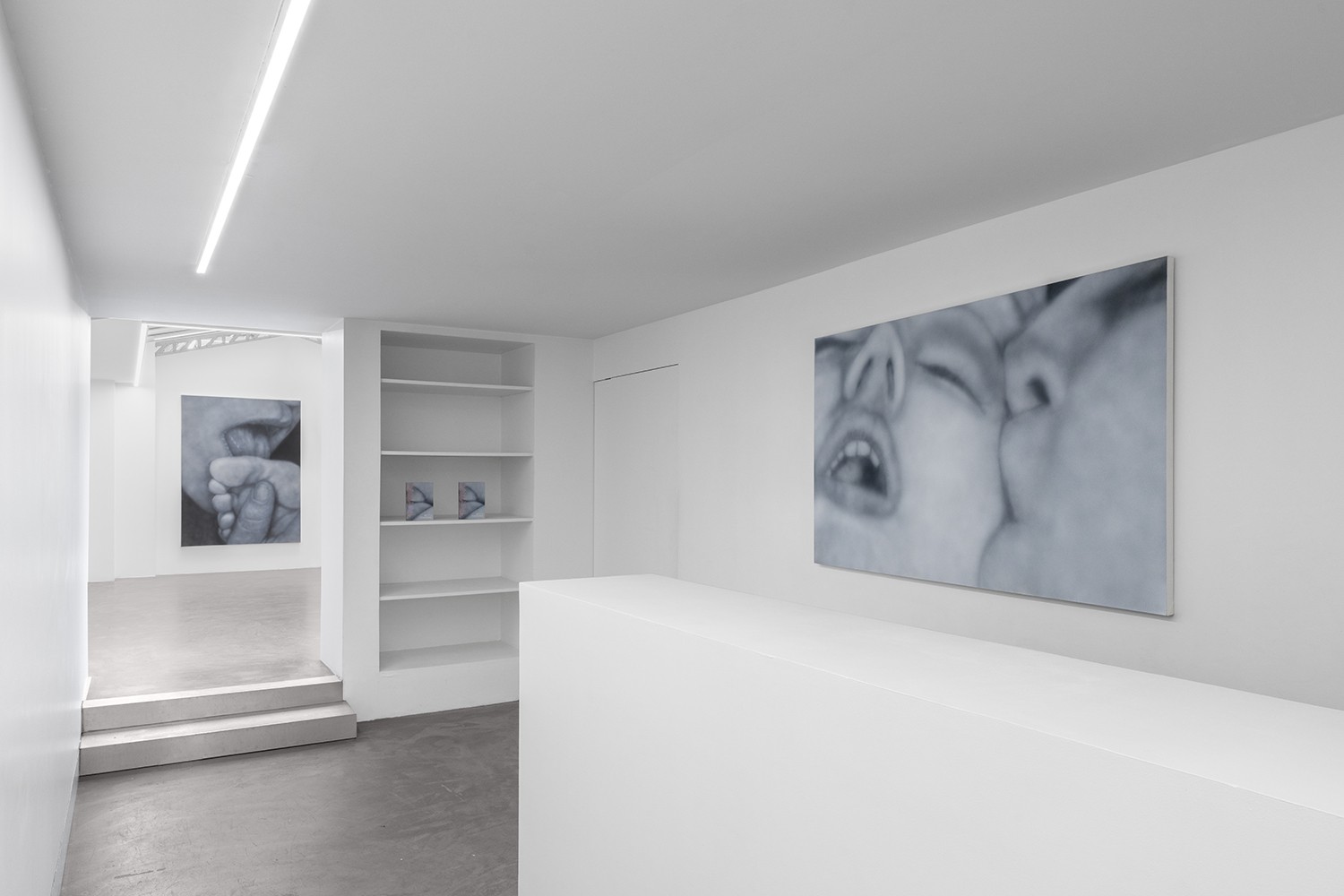
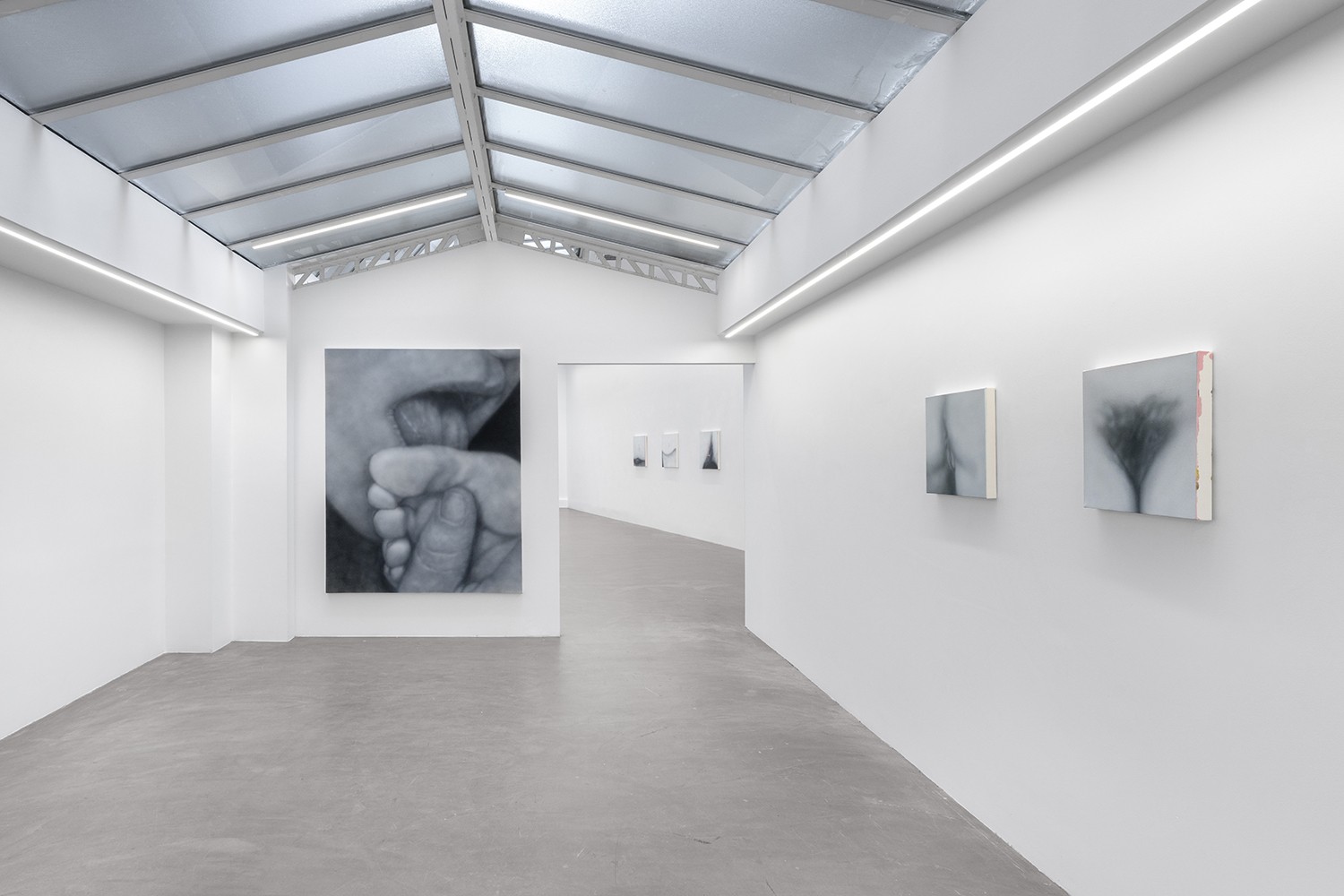
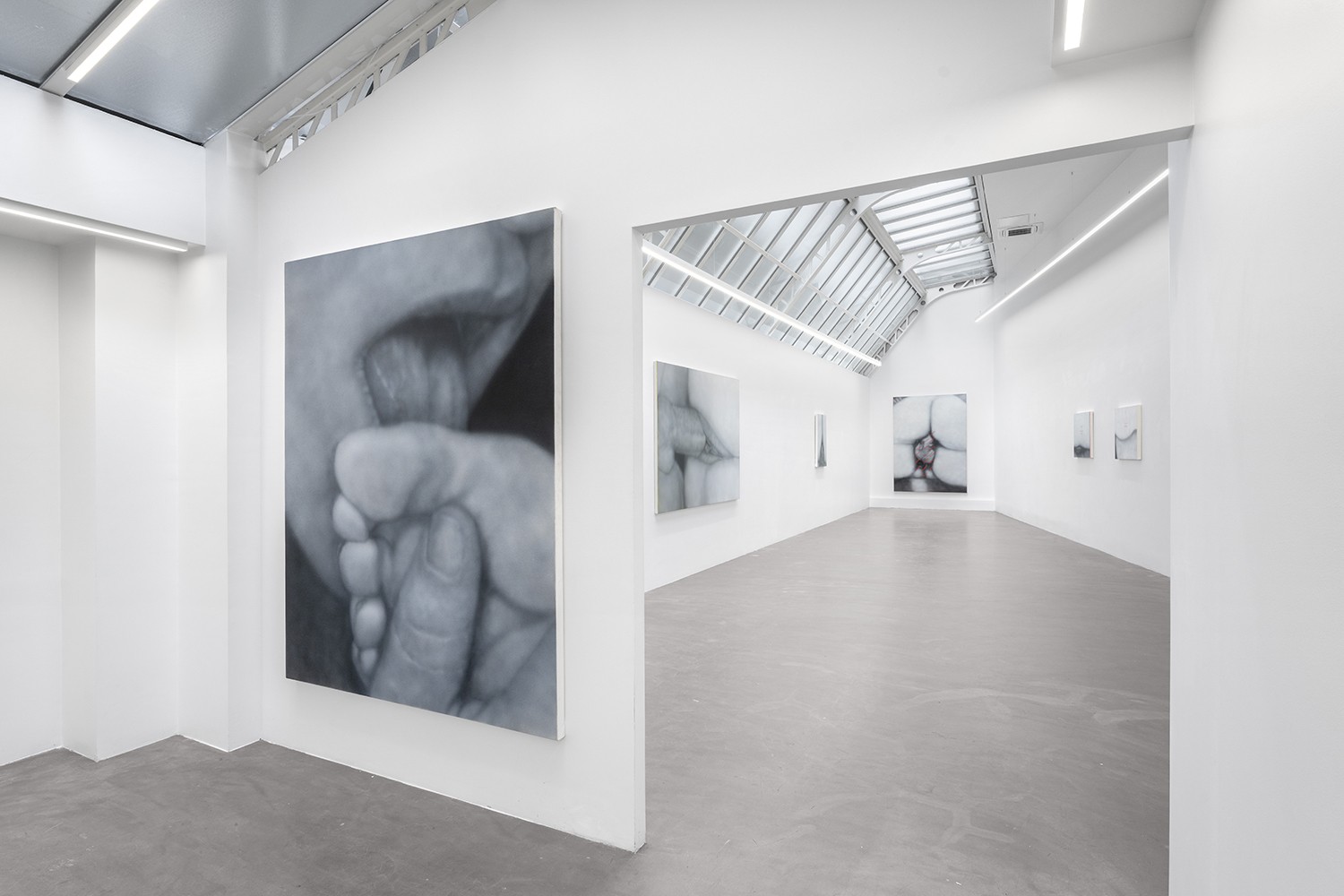
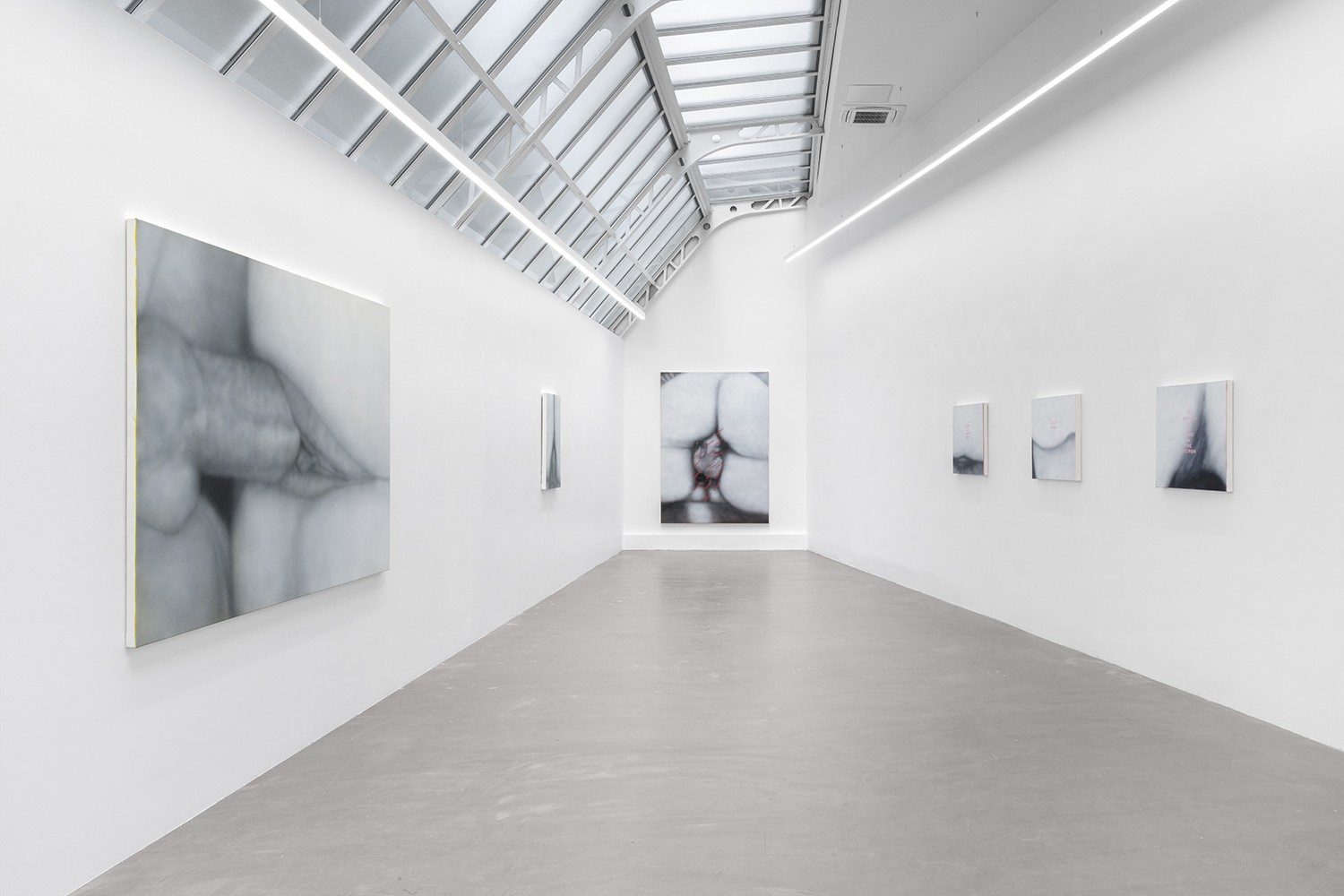
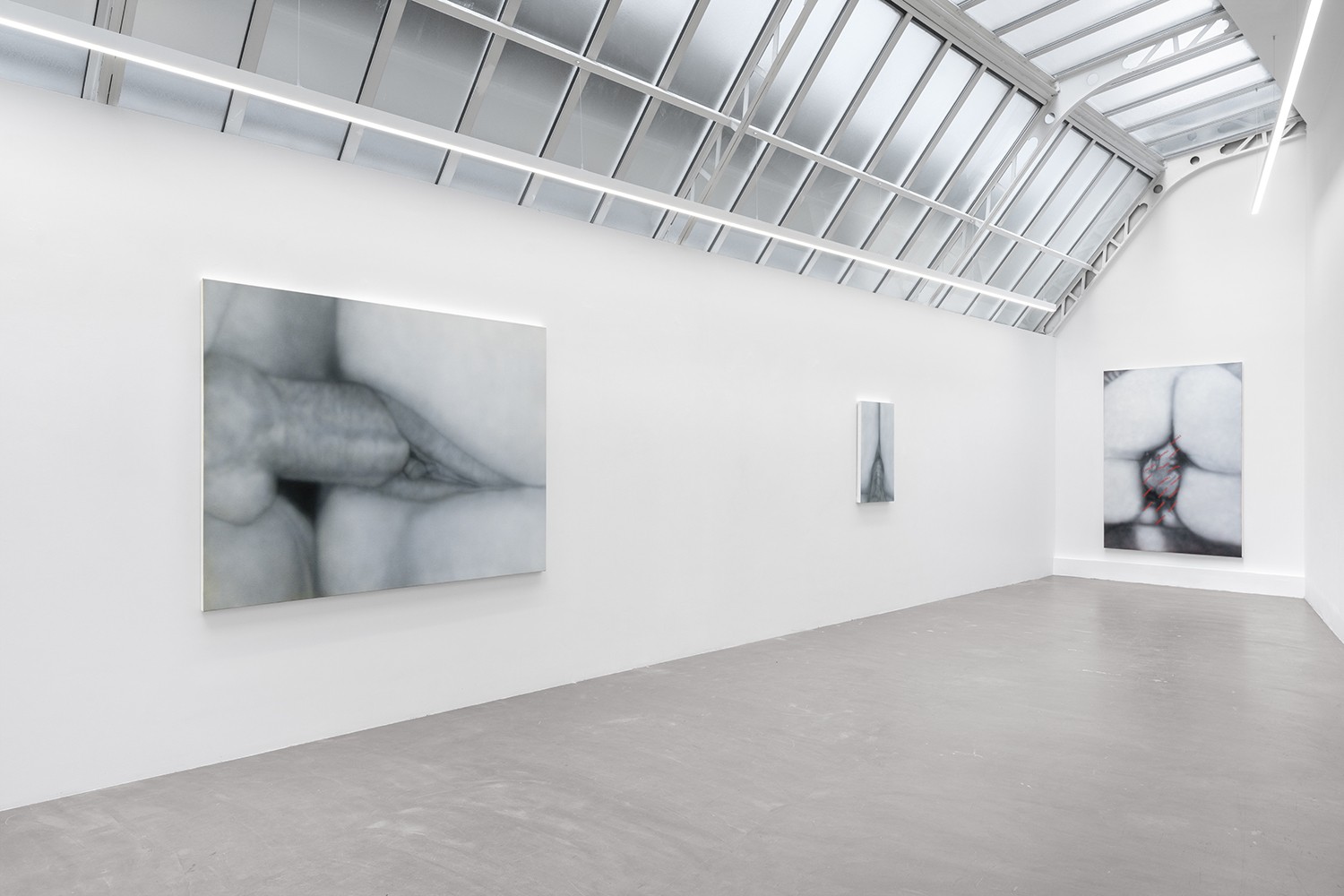

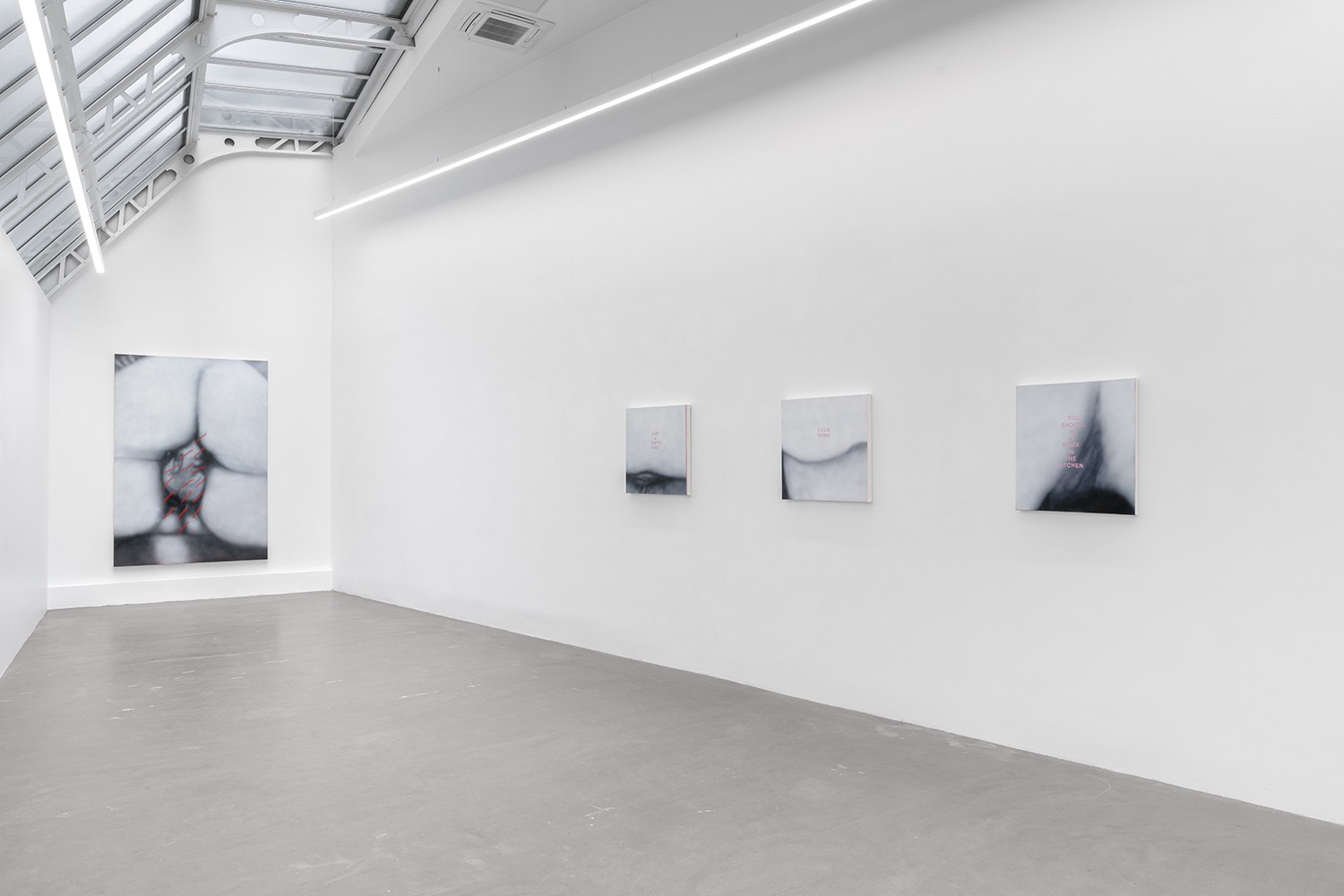
© Credits photo: Nicolas Brasseur










For the first time in France, Galerie Bremond Capela (formerly cadet capela) presents a major exhibition dedicated to Betty Tompkins, a key figure in contemporary art and a pioneer in the representation of female sexuality.
For over fifty years, the American artist has challenged conventions by appropriating erotic imagery and transforming it into monumental and delicate works. Her iconic Fuck Paintings series, initiated in 1969, repurposes intimate body fragments, turning them into compositions that verge on abstraction, where the painterly material reveals a raw sensuality devoid of fetishization. Through her hyperrealistic treatment of blur and texture, Betty Tompkins questions the boundaries between eroticism and abstraction, confronting the viewer with the power of the image itself.
Long censored and overlooked in an art world dominated by the male gaze, Tompkins continued her work with unwavering determination. Rediscovered in the 2000s, thanks to a growing interest in feminist art and the reassessment of marginalized artists, she is now celebrated for her vital role in deconstructing taboos and reclaiming female desire.
This unprecedented exhibition revolves around Censored Painting #2 (Paris 1973 - Instagram 2019), a work inspired by the turbulent fate of Fuck Painting #1 (1969). Seized by customs and banned from entering France in 1973, this early piece was recently censored again—this time by Instagram—underscoring how little societal norms have evolved when it comes to the visibility of the female body. In an ironic twist, Fuck Painting #1 is now carefully preserved in the collections of the Centre Pompidou. Yet, its recent censorship highlights that despite an apparent broadening of discourse around sexuality and freedom of expression, depictions of the female body remain subject to the same prohibitions as decades ago.
Bremond Capela is pleased to present eleven major works from the Fuck Paintings, Pussy Paintings, and Sex Paintings series, showcasing the breadth of Tompkins’ committed artistic practice. Her style, akin to photorealism, combines airbrush techniques with soft pastel backgrounds, occasionally incorporating misogynistic texts that she subverts to expose their absurdity. Through her paintings, Betty Tompkins stages the transgression of prohibitions and reveals what patriarchal morality has long sought to conceal: the sexual and creative power of women.
Her work resonates with ancient myths, particularly that of Demeter and Baubo, the ancient deity who lifts her skirt to expose her vulva, restoring joy and balance to the world. Tompkins reminds us of the vulva’s original place as a symbol of fertility and regeneration before phallocentric civilization rendered it unspeakable.
Betty Tompkins’ work urges us to reconsider the representation of the female body, challenging prohibitions and reclaiming the vulva’s rightful place in art history. Through her radical and militant aesthetic, she extends the legacy of 1970s feminism while reigniting a question that remains as urgent as ever: who decides what can be shown?
Betty Tompkins has presented recent solo exhibitions at MO.CO. Montpellier Contemporain, FR and The Flag Art Foundation, New York, USA. Her work has been featured in numerous group exhibitions, including Ordinary People: Photorealism and the Work of Art since 1968 at the Museum of Contemporary Art, Los Angeles. USA; Lacan, Centre Pompidou Metz, FR; A Woman Looking at Men Looking at Women, Muzeum Susch, Zernez, CH; Half the Picture: A Feminist Look at the Collection, The Brooklyn Museum, Brooklyn, USA; Histórias da sexualidade, Museu de Arte de São Paulo, São Paolo, BR; Black Sheep Feminism: The Art of Sexual Politics, Dallas Contemporary, Dallas, USA; and Elles, Centre Pompidou, Paris, FR among others.
Her works can be found in the permanent collections of the Brooklyn Museum, Brooklyn, NY; Centre Pompidou, Musee National d’Art Moderne, Paris, France; Pennsylvania Academy of Fine Arts, Philadelphia, PA; Museum of the City of New York, New York, NY; Shelly & Donald Rubin Foundation, New York, NY, among others.